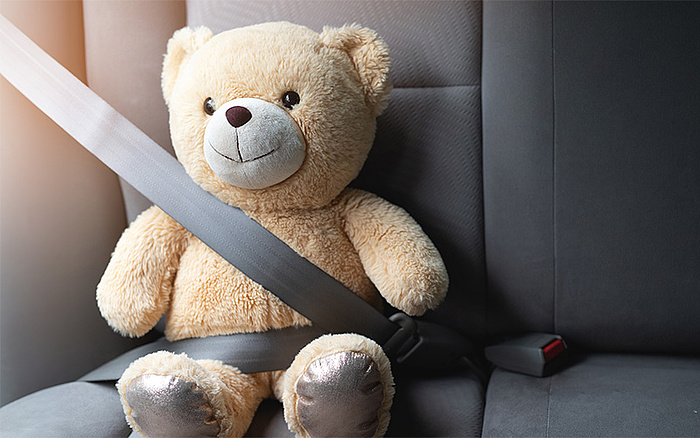
Everyday IP: World records and unbeaten champions
We are all obsessed with the biggest, fastest, oldest, priciest – whatever pushes the boundaries of possibility and stretches the imagination. This superlative quality is what makes world records an irresistible source of fascination and wonder, no matter how quirky or everyday the subject matter is, and few topics manage to be both of these quite like Intellectual Property (IP).
Tracing a long history of ingenuity and a baffling array of achievements, it is clear how IP is a rich source of fun factoids. Guinness World Records, the self-styled "global authority on all things record-breaking," pays homage to the legal protections that uphold human creativity by maintaining IP categories on its laudable leaderboards.
Of course, not every trademark or patent is eligible for a world record title. The organization has a list of prerequisites that determine whether an IP right or any other accomplishment can be in the running. To qualify, a submission must be measurable based on objective criteria, verifiable with substantial evidence and standardizable to manage comparisons and competition.
We take a look at a selection of these landmarks in innovation, flicking through the pages and the ages for the standouts that fuel our ambitions and inspire us to greater levels of daring, that is, for the true champions of IP.
A matter of scale
Many IP world records are defined by the word "most." This is an acknowledgment of sheer numbers, celebrating those situations where one of an inventor's or invention's most noteworthy characteristics is abundance.
Case in point: On September 8, 2016, Shunpei Yamazaki of Japan attained the world record for most patents credited to an inventor — a mind-blowing 11,353! Even the renowned Thomas Edison could boast of "only" 1,093 patents bearing his name. Meanwhile, Shunpei Yamazaki's tally has continued to grow, spanning 10 different countries and now including electrode production, digital memory for long-term data retention and even a glasses-like device potentially capable of interpreting emotions.

These days, many life-changing inventions are a collaborative effort, and letters patent recognize this shared work as well as the prior art that came before.
Of course, there are some contexts in which a single IP registration can leave mouths agape. This may be the case for Google, which received the world record for the most valuable trademark. On June 15, 2011, the digital giant's premier trademark was valued at $44.3 billion USD, but things have mushroomed since then. Its portfolio now consists of more than 500 other trademarks covering slogans, hardware and software, programming languages and other key properties. As of early 2024, Google's company image is estimated to be worth more than $333 billion USD, according to Brand Image. At the same time, tech rival Apple's brand has surged beyond half a trillion, meaning it may already be too late for the search engine to look to its laurels.
Most records are made for the breaking – it is the human spirit to reach beyond – but some would require a grand archeological discovery (or a time machine) to consign to the history books.
Pioneers and trailblazers
There is a first time for everything, and the IP world is no different. Take the earliest trademarks, often attributed to stonecutter signs dating back some 6,000 years to ancient Egypt. By comparison, patents are much more modern, with the first recorded industrial patent being granted in 1421. Florentine architect and engineer Filippo Brunelleschi received the three-year grant for a barge designed to transport and offload marble.
But new IP beginnings are not exclusive to the distant past. One relevant example occurred on April 12, 1988, when the OncoMouse became the world's first patented animal. Announced by Harvard scientists in 1984, with the patent later licensed to DuPont, this genetically modified mouse had a human gene that made it prone to cancer and ensured it passed key characteristics to its offspring. What makes this case even more interesting is the fact that "ONCOMOUSE" was also a registered trademark in the United States until 2022.
While these and other firsts were obvious milestones in IP, the value of some of the most relevant records only became clear over time.
Roadworthy records
Inventions and innovations are often focused on saving lives. Many are easy to identify, such as vaccines, sunscreen and water treatment processes. Others may be less expected. For example, we may take toilets for granted today, but when the first patent for a flushing model was awarded to Scottish inventor Alexander Cumming in 1775, the invention was well on its way to preventing disease through improved hygiene and water sanitation.

The simple act of buckling up with every car journey has saved countless lives worldwide, with U.S. national statistics recording almost 15,000 prevented deaths in a single year.
Whether conspicuous or understated, such quality-of-life innovations are critical to safety and well-being. Addressing potentially dangerous tasks or environments provides ample inspiration to practical thinkers — and driving is frequently a top priority.
Hence, Swedish engineer Nils Bohlin invented the three-point seatbelt patented by Volvo in 1959. Over the years since, this technology has saved tens of thousands of lives and billions of dollars in medical costs. For these reasons, the invention now holds the world record for most lives saved by a seatbelt innovation.
Although the record focuses on directly preventing deaths, it is worth noting that the three-point seatbelt has been the starting point for other inventions that protect people. For example, although airbags were patented several years before Nils Bohlin's seatbelt, more recent innovations have combined both mechanisms into an inflatable seatbelt system.
With that said, record-setting technology is not just about saving lives; it can also entertain. There is one digital innovation that can bring many different IP rights together in a single, pixelated context.
A league of licenses
While the first dedicated video game technologies were popping up in the United States in the 1960s, Tennis for Two — a precursor to Pong — had already been captivating players since 1958. However, its creator, nuclear physicist William Higinbotham, did not patent his invention at the time.
In the following decades, video games grew far beyond digitized tennis. Covering everything from controllers and wearable devices to virtual reality, IP protection in this area has helped inventors merge storytelling, technology and play. However, the IP landscape can be complicated as well as creative, and integrating stories from external sources into video games requires precise licensing agreements. These deals protect content from unauthorized reproduction while facilitating lucrative collaborations.

Substantial cross-promotional opportunities make video games a popular scene for IP licensing. On the creative side, interacting with established settings often holds built-in appeal for designers and players.
It was exactly this framework that has shaped Super Robot Wars, which currently holds the world record for most IP licenses used in a role-playing video game series. Owned by Bandai Namco Entertainment Inc. and having over 90 titles since 1991, the Japanese series allows players to battle as robots from various animations, manga and even other video games. By June 2, 2021, Super Robot Wars had used 274 IP licenses. However, due to the geographical terms of these agreements, the series is almost unknown outside of Japan.
This is far from the only example of license crossover. Nintendo's Super Smash Bros follows a similar pattern, featuring the company's own characters alongside others from:
- Mojang's Minecraft
- Disney and Square Enix's Kingdom Hearts
- Bandai Namco's Tekken
- Capcom's Mega Man
Even toy companies have stepped into the world of licensing: The LEGO Group has leveraged IP law to make popular plastic brick sets based on Harry Potter, Marvel, Star Wars and more.
World records are a snapshot of critical moments in IP, but that story is being written every moment around the globe. In time, some of the current tops will be toppled, and many more novel records will be set as we continue to discover, create and innovate. Could your idea lead to the next big thing? Contact us today to see how the Dennemeyer team can help protect your IP on the way to stardom.
Filed in

IP infringement disputes abound in the film industry but some are more dramatic than others. Explore the unusual IP cases spawned from prominent movies.



